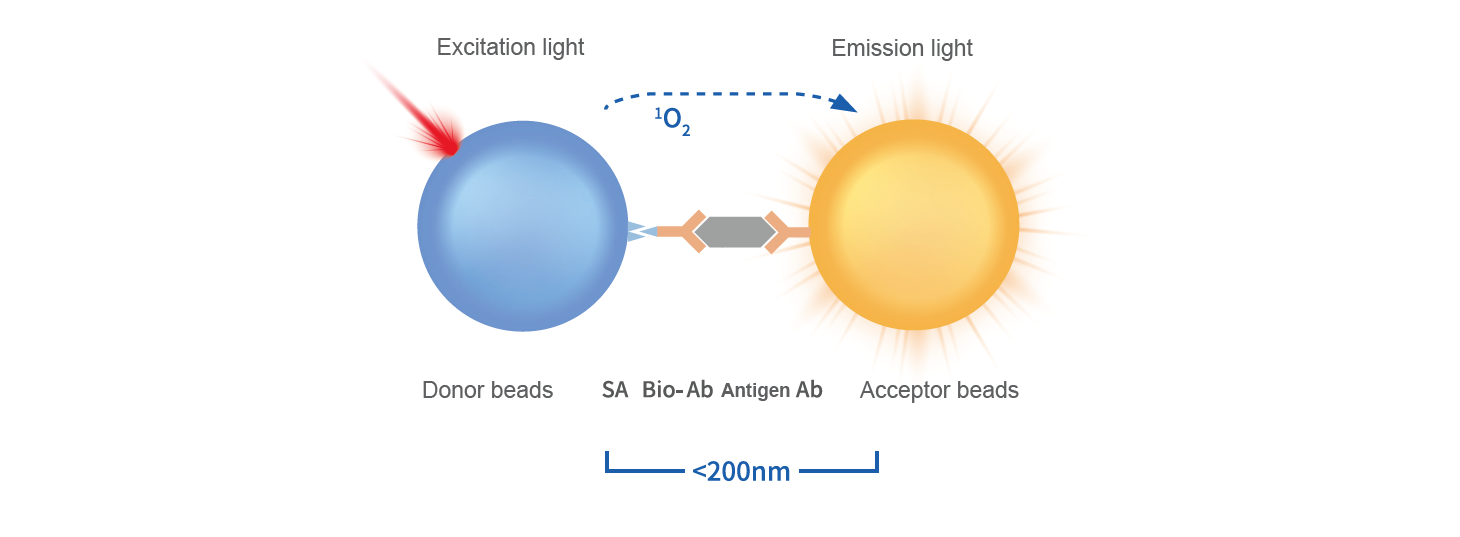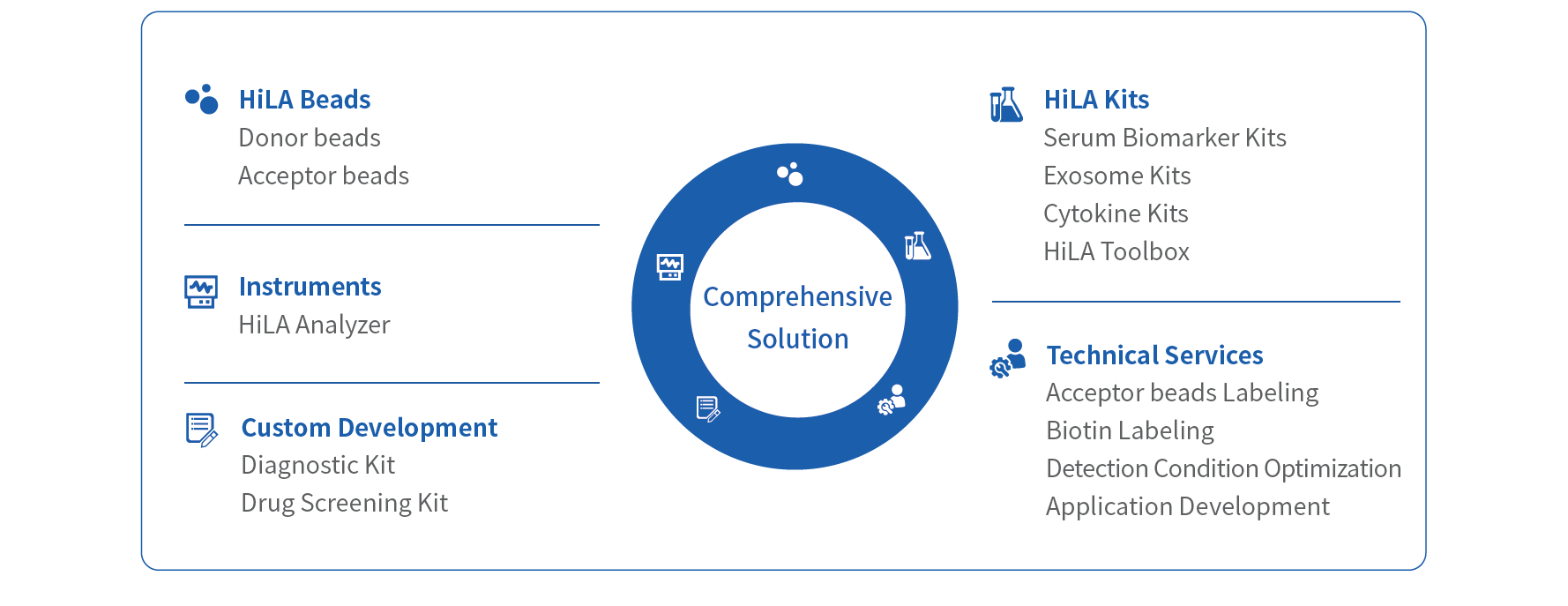
Homogeneous ImmunoLuminescence Assay
Homogeneous ImmunoLuminescence Assay(HiLA) is a new milestone in the field of chemiluminescent immunoassays, featuring high throughput, low background, good repeatability, high sensitivity, simple operation, minimal sample requirement, and a wide detection range, making it suitable for automated detection instruments. Based on HiLA platform, VDO BIOTECH has launched a comprehensive solution covering the entire process from homogeneous microspheres, reagents, and instruments to technical development and large-scale production, providing efficient and reliable tools for clinical diagnostics and life science research.
Principle of Homogeneous ImmunoLuminescence Assay
HiLA is based on two types of nanobeads (donor beads and acceptor beads), with specific antibodies cross-linked on the surface of the beads. After incubation with the analyte, the two antibodies form a double-antibody sandwich immunocomplex with the antigen, keeping the distance between the two beads within 200nm. Upon excitation, the donor beads generate singlet oxygen, which diffuses to the acceptor beads within 200nm, resulting in emitted light from the acceptor beads. The light signal is collected by a photosensitive element, and the concentration of the target protein in the sample is calculated using mathematical fitting. When the analyte does not contain the target protein, no immunocomplex is formed, and the distance between the two beads exceeds 200nm, preventing the transfer of singlet oxygen, and no emission occurs from the acceptor beads.

Technical advantages
Fast reaction: High detection speed.
Easy operation: Simple reaction steps, no washing required, the machine is easily automated.
Applications of Homogeneous ImmunoLuminescence Assay
HiLA uses 680nm long-wavelength excitation and 615nm short-wavelength emission, combined with time-resolved fluorescence detection mode, providing low background signal and strong anti-interference capability, making it an ideal choice for detecting complex samples such as serum and plasma. The reaction system can detect within a distance of less than 200nm between donor and acceptor beads, making it highly suitable for detecting various biomolecules and complex interactions, with wide applications in clinical testing and scientific research.
Application Fields
Clinical Applications: Detection of various serum markers (cardiac markers, infection markers, tumor markers, etc.)
Research Applications: Protein-protein interaction studies, drug screening, cell signaling pathway studies, kinase and enzyme activity assays, exosome quantification, and other applications.

